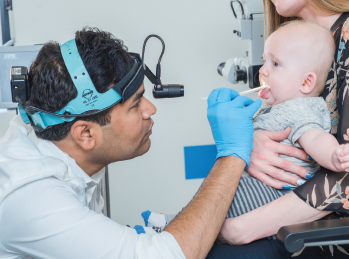
Otolaryngologists Share the Advocacy Work that Inspires Them
Physicians can be powerful advocates for causes they believe in. Here are some examples.

Physicians can be powerful advocates for causes they believe in. Here are some examples.

With new COVID-19 precautions in place, otolaryngologists are seeing an increase in patient visits, despite patient reluctance.

Researchers are looking into how to control the inflammatory process at the core of subglottic stenosis (SGS).

Masks, Plexiglas shields at check-in counters, and telemedicine are the new normal in otolaryngology, physicians say.

The training pathway for pediatric otolaryngologists will require completion of an ACGME-accredited fellowship and satisfaction of the eligibility criteria.

Medical journals around the world are opening access to COVID-19-related research for public viewing to ensure timely access to information and to share research that may slow the pandemic.

Here are key practices providers should focus on to create a safer, more stable environment for patients while remaining vigilant for a COVID-19 resurgence.

Hemendra Bhatnagar, MD, applies the exceptional fine motor skills he once used in surgeries to paint landscapes and create woodwork.
Understanding temporal dynamics of COVID-19 patient symptoms could provide fine-grained resolution to guide clinical decision-making.
The voice and airway presentation of patients with FMS, IBS, and/or CFS suggests that these disorders may be different clinical manifestations of a shared pathophysiology.
There were no significant complications for drug-induced sleep endoscopies (DISE) performed on child patients in the operating room or in the MRI induction room.
Endoscopic and microscopic stapes surgery have similar audiological success, but some data suggest lower chorda tympani injury and postoperative taste disturbance risk with the endoscope.
A look at whether a prescription of voice rest has a meaningful impact on vocal outcomes following CO2 laser resection of superficial
vocal cord lesions.
Patient satisfaction was neither impaired nor improved by the presence of a scribe in the otolaryngology clinic.

ESS can be considered in patients that are refractory to medical management as a non-destructive option, as risk to hearing is low.

Patients with isolated face and lip angioedema, with no signs/symptoms of laryngeal and pharyngeal involvement, can be individually assessed for the need of laryngoscopy.